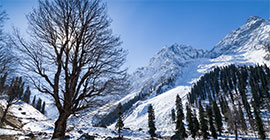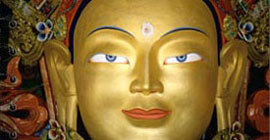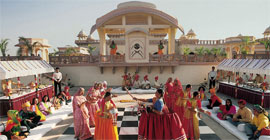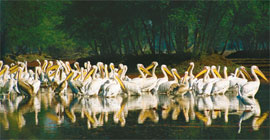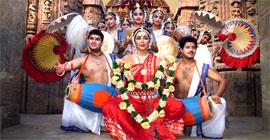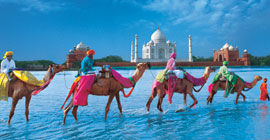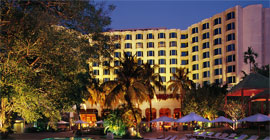Coimbatore
Home | Coimbatore
Coimbatore, also known as Kovai, is a major industrial city in India and the second largest city in the state of Tamil Nadu.It is the administrative headquarters of Coimbatore District. It is known as Manchester of South India. It is also a part of Kongu Nadu region of Tamilnadu.
History
During the early period it was ruled by the Karur Sangam era Chera . Later, the region passed to the Kongu Rattas and was the heartland of the Ganga kingdoms. A second Chola empire arose in the mid-9th century, and gained the territory encompassing Coimbatore. They established a planned layout, with the Koniamman temple in the center.
The Sugarcane Breeding Institute at Coimbatore, 197
From the Cholas, then to the of Karnataka in 191. By the early 14th century, the region was ruled by the Muslim rulers of Madurai under the Delhi Sultanate. The Muslim rule in Madurai was ended in the late 14th century by the newly formed Vijayanagara Empire. The Vijayanagara reign brought new settlers from Andhra Pradesh and Karnataka. In the 1550s, the military governors (Nayaks) of the Vijaynagara Empire took control of Madurai, with Coimbatore belonging to their territory. After the downfall of Vijayanagara Empire, the Madurai Nayaks established their state as an independent kingdom, with other Vijayanagar offshoots forming new kingdoms in Vellore, Tanjore, Gingee, Chandragiri and Mysore. The Nayaks introduced the Palayakkarars, who were military governors of their respective regions. By the 1700s, frequent fighting between Madurai and Mysore forces in the Coimbatore region resulted in the region being ruled by Mysore. At this time Coimbatore was still a village of around 3000 people.
In the 1760s, the Mysore throne was usurped in a coup by General Hyder Ali. Ali was hostile to the British, who were gaining a foothold in the area with the help of Arcot Nawab. A series of wars between the British and the Mysore forces continued till Tipu Sultan's death in 1799, when the Mysore throne was handed over to the earlier Mysore rulers. At that time the British annexed the Coimbatore region into the Madras Presidency. When Hyder Ali acquired Coimbatore, the population was around 3000. The village dwindled to 1500 by Tipu's death.
Coimbatore played a prominent role in the Second Poligar War against the British in 1801, when the first attack was done against the British Columns stationed in Coimbatore by the Poligars of Salem, Coimbatore and Dindigul region along with some Malabar and Mysore rebels.
In 1804 Coimbatore was established as a capital for the newly formed Coimbatore district and in 1848, it was accorded the municipality status. Sir Robert Stanes, a British entrepreneur and philanthropist, became the first Chairman of the Coimbatore City Council and also founded the Stanes in 186, a major higher secondary that has stood until the present day as a jewel of the city.
In 1981 Coimbatore became a corporation with annexation of the Singanallur municipality.
Sunset at Ukadam, Coimbatore
Coimbatore is situated in the extreme west of Tamil Nadu, near the state of Kerala. It is surrounded by mountains on the west, with reserve forests and the (Nilgiri Biosphere Reserve) on the northern side. The eastern side of the district, including the city is predominantly dry. The entire western and northern part of the district borders the Western Ghats with the Nilgiri biosphere as well as the Anaimalai and Munnar ranges. A western pass to Kerala, popularly referred to as the Palghat Gap provides its boundary.
Because of its close proximity to the Western Ghats, the district is rich in fauna.
Coimbatore is situated on the banks of river Noyyal. Many lakes and ponds were constructed near the river during ancient periods. The Coimbatore city alone has nine lakes (wetlands). In most of the urban ecosystems, these wetlands are the major life-supporting component. They support high concentrations of birds, mammals, reptiles, amphibians, fish and invertebrate species. The Coimbatore Urban wetlands harbours more than 15 species of resident and migratory birds, with August – October being the peak season. Spot-billed Pelican, Painted Stork, Open Billed Stork, Ibis, Spot-billed Duck, Teal, Black Winged Stilt are some of the migratory birds that visit Coimbatore wetlands regularly. 43
Apart from the species common to the plains, wild elephants, wild boars leopards, tigers, bison, various species of deer, Nilgiri Tahr, sloth bear and black-headed Oriole can also be found. The Anamalai Wildlife Sanctuary (88 km) in the Western Ghats at an altitude of 1,400 meters covers an area of 958 km². Among the region's livestock animals are Kangeyam breed bulls (cross-bred by Mandradiar family in 17th century to suit the terrain). This breed, which helped the region gain a foothold in the dairy industry, are found only in Coimbatore and neighbouring districts. More than 0% of the district is classified as forest, lying in the west and north. The forests here are abundant in commercially significant trees such as teak, sandalwood, rosewood and bamboo. The Nilgiris slope viz. the Mettupalayam range is rich in sandalwood trees and bamboo. They vary from rich tropical evergreen forests of Punachi range to jungles of shrubs in southern ranges.
Apart from the high altitude regions of Western ghats, most of the forest area has come under Lantana invasion. The locals refer to it as Siriki chedi.
Climate
Coimbatore has a pleasant, salubrious climate, not reaching the high temperatures of other southern India cities. Situated in the Western part of the state of Tamil Nadu, Coimbatore is located at an elevation of about 398 meters. The temperature during both summers and winters varies between 37°C to 14°C. In the months from July to February, highest temperature is 41°C and lowest is 1°C.4
Culture
The city has a multi-cultural society, mostly of cosmopolitan nature. Its inhabitants are largely conservative and traditional, retaining their roots in their native villages.
There are numerous temples in the city including the Perur Temple, the Konniamman temple and the Dhyanalinga Yogic Temple. The Mariamman festivals, at the city's numerous Amman temples, are a major event in summer. A replica temple of Tirupathi is located in Valparai and another near Mettupalayam. A famous ISKCON temple is also located 9 km from the city. It is a famous temple dedicated for Lord Krishna. Marudamalai, a well known shrine to Murugan, is close to the city. Coimbatore has also been an abode for many siddhars or rishis, who were also experts in medicine, alchemy and astrology. The most prominent of them was Pambatti Siddhar who is said to have lived in Marudamalai. Many of his findings are recorded as poems.
Coimbatore cuisine
Coimbatore cuisine is predominantly south Indian with rice as its base. Most locals still retain their rural flavour, with many restaurants serving food over a banana leaf. North Indian, Chinese and continental cuisines are also available. Mysorepa (a sweet made from lentil flour and ghee), idly, dosa, Halwa (a sweet made of different ingredients like milk, wheat, rice) and vada-sambar and Biryani are popular among the locals.
Transport
The city has an airport (Coimbatore Airport) at Peelamedu (11 km from the city) and an air-force base at Sulur (15 km). The Coimbatore airport caters to domestic flights to all the major Indian cities and international flights to Singapore, Kuala lumpur, Muscat, Sharjah and Colombo. The Extended Runway is now ready at Coimbatore airport.It now runs to 9,760 feet and is capable of handling wide-bodied and "fat-bellied" aircraft, especially those operating on the international sector.With the extended runway, airlines can operate aircraft types such as 747 SP, A 330, 747-300B, 747-300 ER, 747-400 and 747-00.
Temples
Marudamalai
The word "Marudhachalapathy" or "Maruthamalai Andavar" means Master of Hills, abounding in Marudha trees. The name has also a legendary origin. A Siddha, overcome by excessive thirst and tiredness, sought shelter under the shade of a Marudha tree and prayed to the mercy of the Lord Muruga for a shower of water, which sprang at once as though by a miracle from beneath the tree. As water gushed out from the roots of the marudha tree, the Siddha leaped in joy, glorifying Muruga as the Lord of "Marudha" and "Jalam" (water) with the passage of time, "Marudhajalapathi" became "Marudhachalapathy".
According to epic, a saint prayed to God sitting under a marudha tree for helping him quench his thirst and tiredness. Soon he noticed water springing from beneath the tree. Overwhelmed, he pronounced 'Lord Muruga' as the Lord of Marudhajalapathi. In due course it became 'Marudamalai'. History has it that Pambatti Siddhar, was originally a snake charmer and was initiated into the world of philosophy by a Siddhar by name Sattai munivar. Pambatti Siddhar is said to have performed several miracles, and written extensively on herbal medicine. His songs are addressed to snakes.
Location of the temple: Sri Subramanyasami temple is located at Marudamalai, 13 km North - West of Coimbatore, Industrial city of Tamil Nadu, India.
Perur
The Garba graha of this temple was built by Karikala Chola in the early Christian era. It is a Shiva shrine with a Swayambumoorthy.
The Sthalapuranam states that when the calf of Kamadhenu was playing in the forest of arasu trees its legs got plunged into a hard object from which blood gushed out. It was then discovered that the object was nothing but a sacred Siva Lingam. This led a temple to be built here. It was built over the Moolasthanam and worshipped by the Saivaites. The place became a Vaipu Sthalam in Saivalore. Since it was sung by Saint Appar and by Saint Sundarar in their Devaram. The temple is located in Perur, 6 km from Coimbatore on the Siruvani main road.
Annur
The Manneswara Temple is located here. This Easwaran Temple was built by a Chera King around 600 years ago. It is believed that a hunter was digging the roots of a tapiaco tree to pull it down. He was surprised to see blood gushing out of the root. He later found a 'Lingam' beneath the tree. On hearing this, the King built a temple here. The uniqueness of this temple is that it faces was 'Markandeya', a staunch devotee worshiped the 'Linga' enshrined here, it is believed. And this Linga is 'Suyambu Linga' that means natural one.
Karamadai
Dedicated to Lord Ranganatha, this is the second oldest temple in Coimbatore. It was built by the Vijayranagara Kings.The Temple attracts a large concourse of people from throughout the land.The famous Ranganathar temple in karamadai is about 4km from coimbatore its also an easy destination spot located at the reachable distance for the people of Coimbatore, Tirupur, Annur, Ooty, Metupalayam etc.
'Thottiyars' clan of people lived at Karamadai. A cow of one of the thottiars failed to yield milk all of a sudden. He found out that the cow was shedding milk at a bush. Enraged, he started to cut it and heard an exploding sound and saw blood gushing from inside. On hearing this, the other people in the village came there and found a 'Suyambu Lingam' inside the bush. The same night God appeared in the dream of him and asked him to adorn the 'Lingam' with 'Chandana Kaapu'.and it is very near to periyanayakkan palayam.







